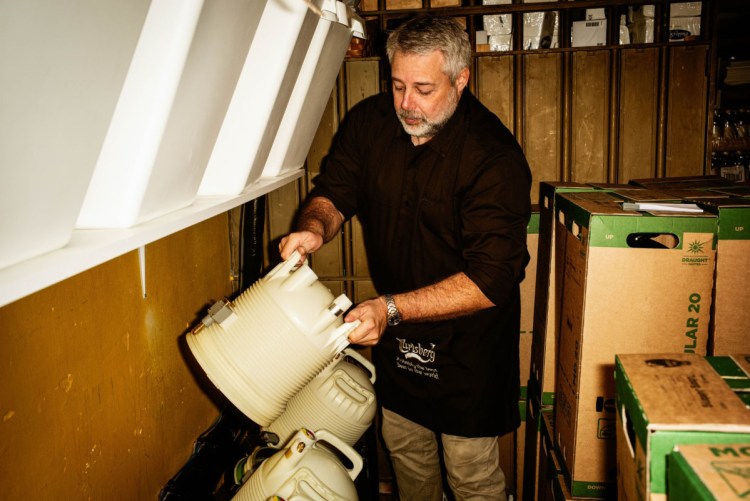In the cellar underneath the Frederik VI bar in Copenhagen, owner Jimmy Streit showed off the innovation that’s enabled him to boost his earnings by 5 percent in a declining business – a line of plastic kegs racked side-by-side like bowling balls against a wall.
Streit switched from traditional steel storage more than a year ago at the behest of his supplier, Carlsberg. Because the new vats keep beer fresher longer, the change enabled him to increase the number of taps running at the bar to 22, adding more expensive brews like Jacobsen Yakima India pale ale and Somersby apple cider.
Bad news for steelmakers is good news for the alcohol industry, which is getting squeezed by the decline of traditional pubs and a shift in consumer tastes away from beer toward wine and mixed drinks. One way for brewers and bar owners to boost profits is to sell a greater variety of premium and craft beers such as those that Streit now offers alongside Carlsberg’s namesake lager.
The company is marketing the plastic kegs as the most significant innovation in draft beer in 50 years – or since the switch from wooden barrels to steel cylinders. Other brewers, including Anheuser-Busch InBev and Heineken, have developed similar technology, but Carlsberg has rolled it out most aggressively, signing up 2,500 pubs in its domestic market. Other territories include Italy, Sweden, Norway, France and some of China’s largest cities.
In some of those markets, all sales of beer on tap will be from the plastic DraughtMaster system by 2020, the company says. “Draft is a seriously tough environment, but this is a win-win for bars and for us,” said Kaare Jessen, who leads Carlsberg’s DraughtMaster team.
Plastic kegs might seem anachronistic at a time when consumer-goods companies’ use of the material for packaging is under fire from environmental groups. Carlsberg’s focus on sustainability includes initiatives such as doing away with the plastic ring holders that bind together six-packs and replacing them with little bits of glue. But the new canisters are recyclable and lighter to transport, cutting fuel consumption, the company says.
They also keep beer fresh for about 30 days, compared with about a week for their older steel cousins. Metal kegs expose the contents to external gases as soon as they’re tapped, while the plastic ones seal the brew inside a separate internal container that’s compressed to release beer to the tap.
Carlsberg isn’t alone in revamping the engine room of the global beer trade. With demand for mainstream draft beer declining, brewers are taking their battle for market share into more obscure but valuable back-end segments of the business.
“It’s clearly important to make these kinds of systems,” Danske Bank analyst Jonas Guldborg Hansen said. “You’re pushing the high-end part of your portfolio, and you’re effectively locking in your customer,” since adopting the new kegs makes it harder for pubs to sell beers from more than one supplier.
Budweiser maker AB InBev and Dutch brewer Heineken are locked in a legal dispute over patents tied to their own new storage methods. Earlier this year, AB InBev filed complaints with the International Trade Commission to try to block imports of Heineken’s BrewLock into the U.S. Heineken fired back in August that AB InBev’s Nova countertop cooler infringed on a patent of its own.
Send questions/comments to the editors.



Success. Please wait for the page to reload. If the page does not reload within 5 seconds, please refresh the page.
Enter your email and password to access comments.
Hi, to comment on stories you must . This profile is in addition to your subscription and website login.
Already have a commenting profile? .
Invalid username/password.
Please check your email to confirm and complete your registration.
Only subscribers are eligible to post comments. Please subscribe or login first for digital access. Here’s why.
Use the form below to reset your password. When you've submitted your account email, we will send an email with a reset code.